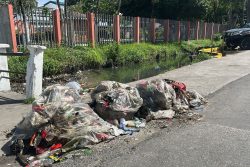 Part 74
Part 74
Introduction
A couple of weeks ago, Column 73 examined a statement by Dr. Mark Bynoe about the uplift of oil every eight to ten days and of his plans to independently market Guyana’s share of petroleum which we will earn by way of royalty and profit share. The column made clear that Dr. Bynoe’s estimate of Guyana’s entitlement bore no relationship with the actual gross production in the first thirty months or so of the production. Bynoe was clearly and even dangerously wrong but he does not appear to have felt any obligation to the public and his President to correct himself on such an important national issue.
So what about our Minister of Finance Mr. Winston Jordan, whose portfolio places him at least as high on the petroleum ladder as Bynoe with the added responsibility for the Natural Resources Fund? Except for his Ministry’s bumbling that exposed the diversion of the (legal fund) Signing Bonus out of Guyana and the Consolidated Fund, Jordan has been largely overshadowed by former Finance Minister Carl Greenidge in matters relating to ExxonMobil and petroleum. But as Column 73 noted, Jordan did make a couple of statements on the sector which are probably worthy of comments although hardly for any profound wisdom coming out of them.
The Dutch Disease and Jordan’s cure
Those who have followed the national discussions on the petroleum sector must be aware of two downsides – the Dutch Disease and the Resource Curse. Dutch Disease is a term coined in the mid-seventies to describe the situation resulting from the dramatic growth of one sector often coming at the expense of other sectors and with consequences for the rest of the economy and the country. Such consequences can be devastating, with neighbouring Venezuela being an extreme case, but try as they might economists have largely found it difficult to see any positives coming out of or being associated with the Dutch Disease.
In fact, it is something which any country with the potential for falling to the virus, ought to formulate policies to prevent the phenomenon and to draw lessons from as many cases as possible. Not too long ago, the IDB featured a publication The Dutch Disease Phenomenon and Lessons for Guyana: Trinidad and Tobago’s Experience. It is unclear whether Jordan read the article but his take on the Dutch Disease was flippant, immature and unworthy of a Finance Minister.
Jordan offered to the Stabroek News that Guyana knew about the Dutch Disease since the days when bauxite was king in Guyana. To use his words, “So in that case, we already had some kind of Dutch Disease”. Jordan was clearly making light of a very serious matter, even as he admitted what has been evident before on the lower East Bank of Demerara. While we have a right to be concerned about real estate prices and the potential for both gentrification and a housing crisis, the Minister did not seem to think that the fate of the workers of the seafood company BEV Enterprises Limited demanded concern and action.
In the same interview, Jordan said not too very clearly that “one of the backbones of this economy so far is that we can produce (food) for that same growing petroleum sector”. That defies commonsense, logic and experience. Jordan must know that one of the consequences of the Dutch Disease is the appreciation of the local currency, which will make our agricultural produce uncompetitive. To cap the unreality, asked what mitigation measures the APNU+AFC Government has in place, Jordan’s offer was the Green State Development Strategy. That must have been the first time that anyone associated with the Strategy heard that it is a cure for the Dutch Disease!
And back of the cigarette box projections
But that was not the only contribution by Jordan to helping Guyanese understand the petroleum sector. He was also talking about oil revenues although to his credit he sought to temper expectations about the income, which the Finance Ministry projects coming from the petroleum sector within the next couple of years. His flippancy was of a slightly different order and according to him Guyana’s take in 2020 would probably be “two hundred and something million” and that what would be available to the Budget is one hundred and something million.”
Part of the duties of the Finance Minister is to include in the National Estimates medium term projections; if only for that reason one might have expected slightly more carefully thought out numbers. But all he volunteered to a paper of record is that “we did some figures the other day and we did that figure”. One might have expected that the Finance Ministry would be working closely with the Department of Energy both to help them with their maths and to coordinate with them on their projections, and to benefit from projections which the petroleum operators are required to share with the Government.
Finally on the Minister and the Petroleum Agreement, which is commonly referred to as the Oil Contract, the Minister is quoted in the same paper dismissing everyone with the banal remark that “everybody was shooting in the dark”. Does Jordan not know that Exxon announced their major oil find in 2015 and that his Government signed the Petroleum Agreement more than one year later? I will never cease to remind everyone that the 2016 Agreement was a post-discovery Agreement, which was a new ball game altogether.
If there was anyone in the dark it was Granger, Jordan, Trotman et al.









